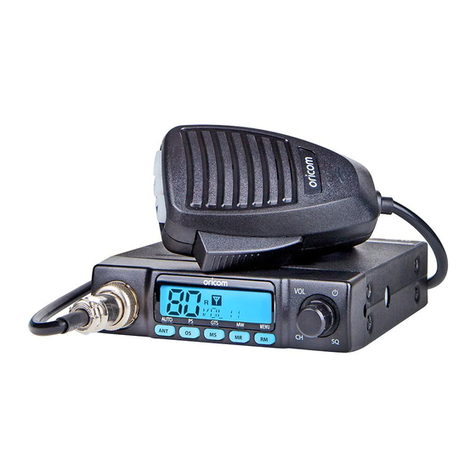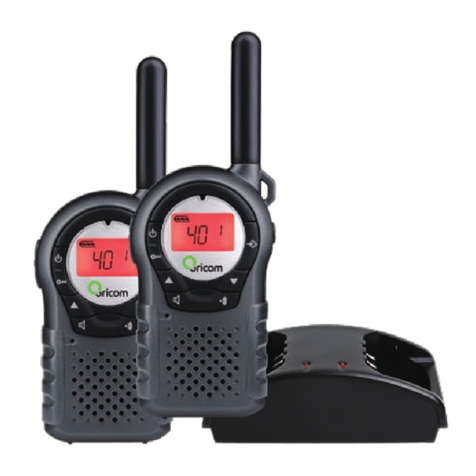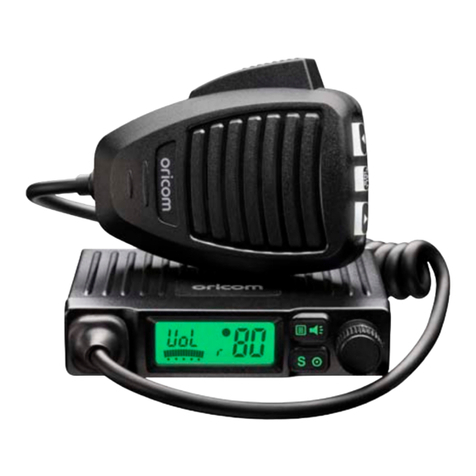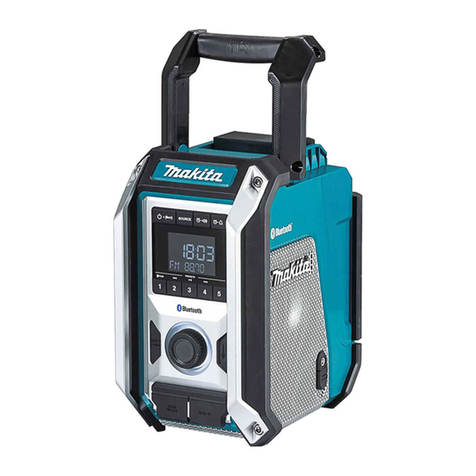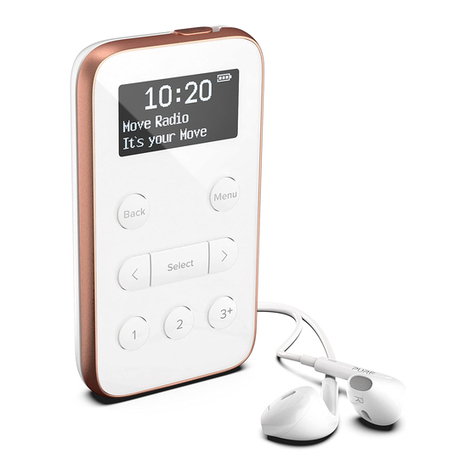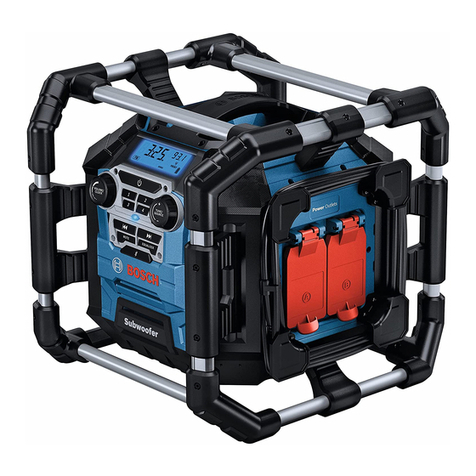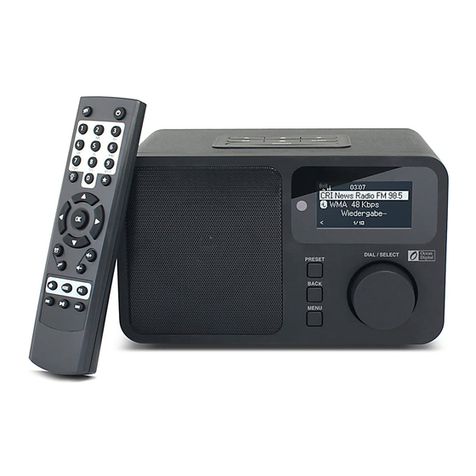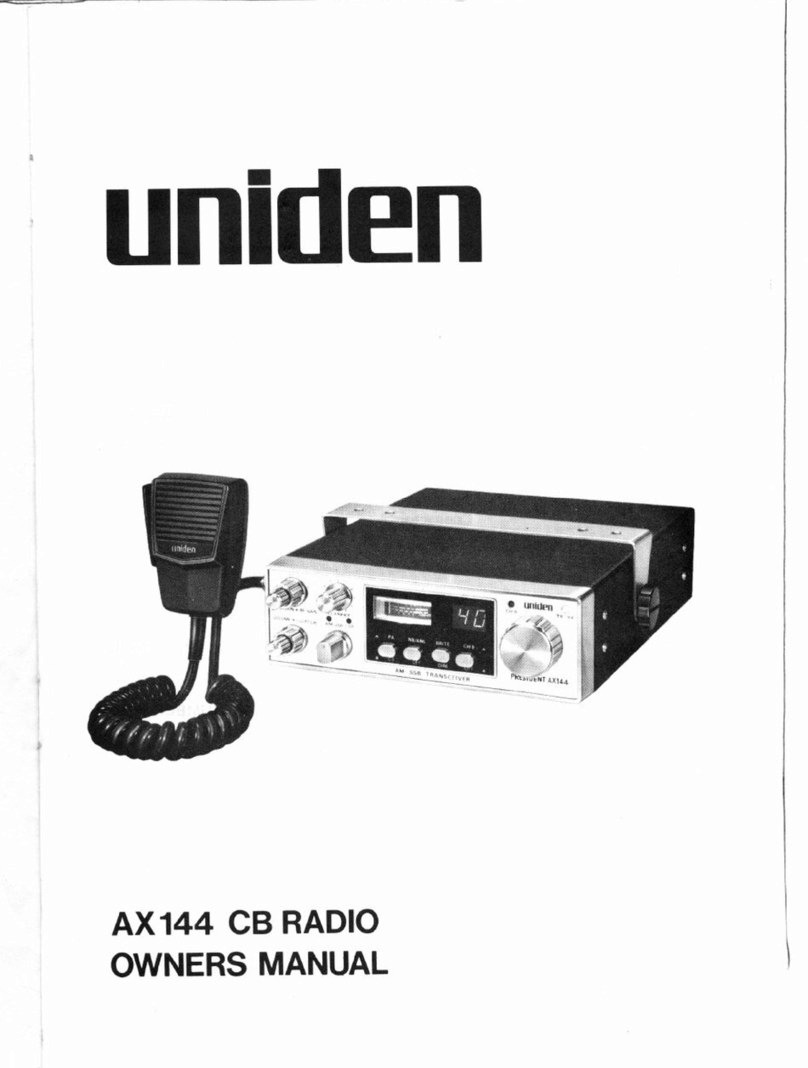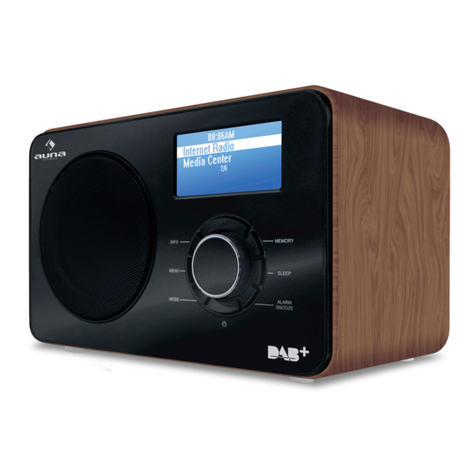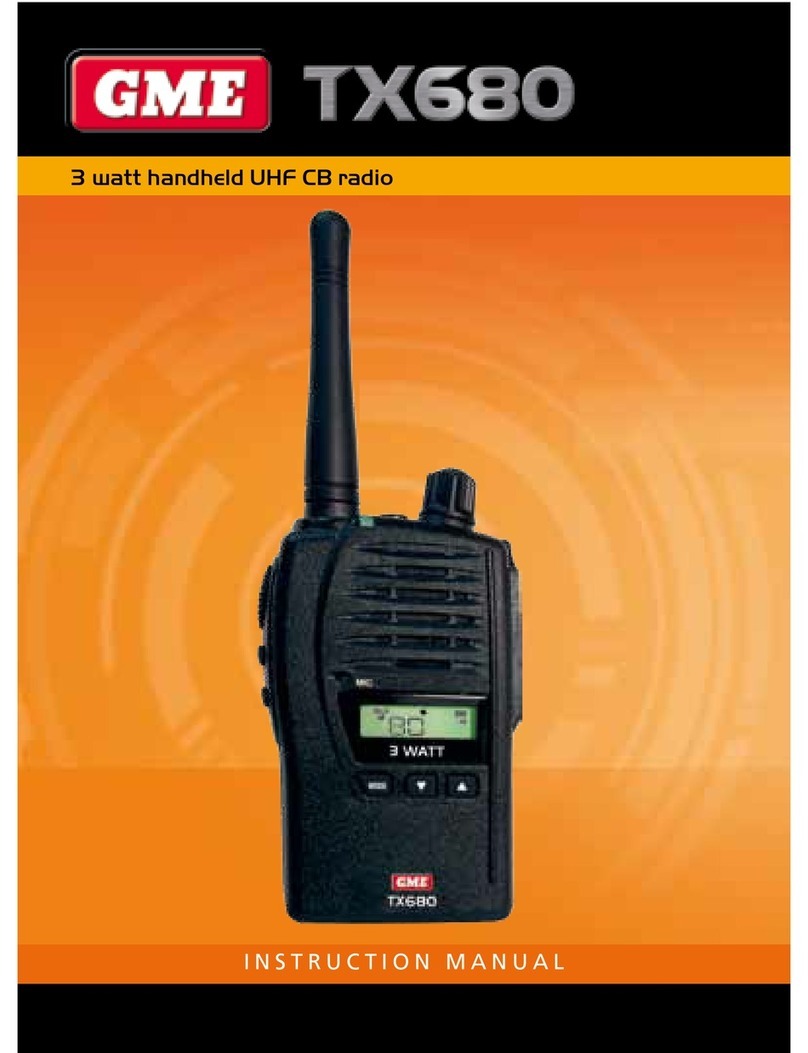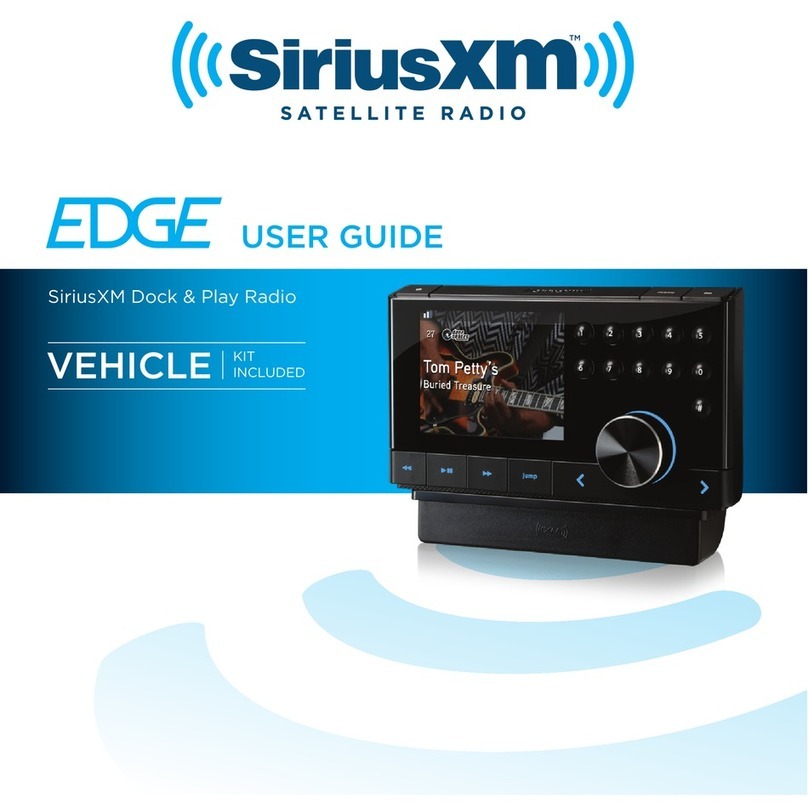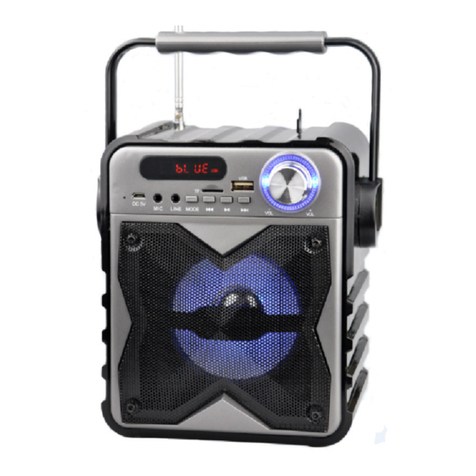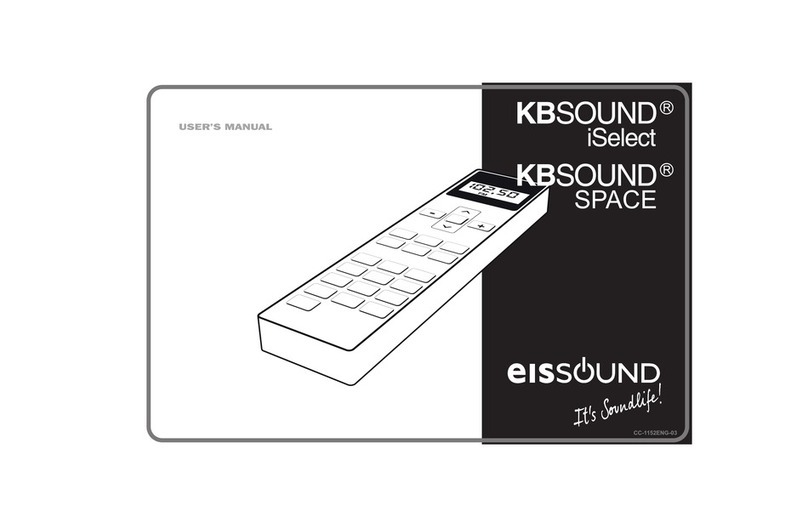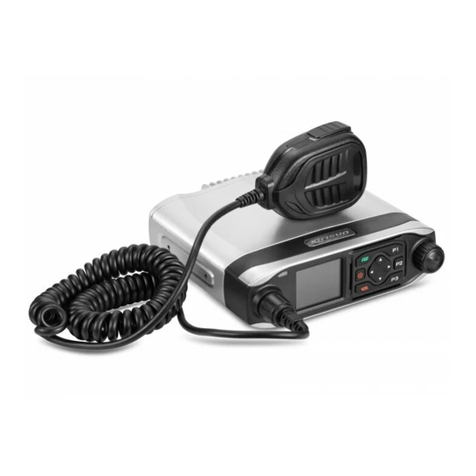Oricom UHF300 User manual

Keep this user guide for future reference. Always retain your
proof of purchase in case of warranty service and register your
product on line at: AUSTRALIA: www.oricom.com.au
User Guide
UHF300 Micro 5watt UHF CB Radio
Downloaded from www.cbradio.nl

This unit complies with all relevant Australian
and New Zealand approval requirements
AS/NZS 4365:2011
Why has the ACMA increased the number of available UHF CB channels?
To provide additional channel capacity within the UHF CB Band the ACMA will over the next 5 years change the
majority of the current wideband 40 channel use to narrowband 80 channel use.
During this time wideband channel use will be gradually phased out as users upgrade their existing radio’s.
This means that the new Oricom narrowband radio you have purchased will have more channels than older wideband
radios. Some of these channels are locked and cannot be used, (see the attached channel chart for more information).
When will this take place?
Early in 2011 new AS/NZS Standards came into effect allowing operators to use additional narrowband channels
and also use narrowband transmissions on some current wideband channels. This increased the number of
channels up to 80, 75 of which are useable voice channels.
What issues may users experience during the transition phase?
When a new narrowband radio receives a transmission from an older wideband radio the speech may sound loud
and distorted – simply adjust your radio volume for the best listening performance. When an older wideband radio
receives a signal from a new narrowband radio the speech may sound quieter - simply adjust your radio volume for
best listening performance. When operating a narrowband radio or Channel 41 - 80 interference is possible from
wideband radios transmitting on high power or on adjacent frequency.
The issues described above are not a fault of the radio but a consequence of mixed use of wideband and
narrowband radios.
It is expected that as older wideband radios are removed from service that this issue will be resolved. Most radios in
use will be narrowband eliminating this issue.
This information is current at time of printing. For further up to date information please visit www.acma.
gov.au
Oricom Connecting you now.
Need Help?
If you need assistance setting up or using your Oricom product now or in the future, call Oricom Support.
Australia 1300 889 785
www.oricom.com.au
Mon-Fri 8am – 6pm AEST
New Zealand 0800 67 42 66
www.oricom.co.nz
Mon-Fri 10am – 8pm NZST

3
Important information ....................................................................................................................4
Please read before installing or operating Your Oricom Radio .........................................................4
Safety information and Warnings....................................................................................................4
Box contents...................................................................................................................................5
Features ..........................................................................................................................................5
Controls and Connectors................................................................................................................6
Front view......................................................................................................................................6
Rear view ......................................................................................................................................6
Microphone (Part No. MIC300) .......................................................................................................7
LCD icons & Indicators...................................................................................................................7
Installtion........................................................................................................................................8
Caution..........................................................................................................................................8
Fitting the Microphone ...................................................................................................................8
DC Power connection.....................................................................................................................8
Over voltage protection..................................................................................................................9
Antenna information & Installation ...............................................................................................10
Optional accessory ......................................................................................................................10
Operations.....................................................................................................................................11
Power On/Off ...............................................................................................................................11
Volume control.............................................................................................................................11
Selecting a channel .....................................................................................................................11
Setting the Squelch Level.............................................................................................................12
Menu...........................................................................................................................................12
Menu list .....................................................................................................................................13
CTCSS and DCS setting ...............................................................................................................14
Duplex .........................................................................................................................................14
Open Scan (OS) Mode..................................................................................................................16
Group Scan (GS) Mode.................................................................................................................16
Priority Channel ...........................................................................................................................17
Busy channel Lock.......................................................................................................................17
Roger Beep..................................................................................................................................17
Key Beep .....................................................................................................................................17
Call tone ......................................................................................................................................17
LCD Backlight level......................................................................................................................18
7 Colour backlight........................................................................................................................18
Scan delay time...........................................................................................................................18
Squelch delay time ......................................................................................................................18
Flip LCD.......................................................................................................................................18
Monitor........................................................................................................................................19
Scan............................................................................................................................................19
Memory On/Off ............................................................................................................................19
Transmitting.................................................................................................................................20
Factory Reset...............................................................................................................................20
UHF channels and frequencies ....................................................................................................21
Frequency table of channel ..........................................................................................................21
CTCSS Freuqncies table...............................................................................................................23
DCS code table ............................................................................................................................24
Customer Support.........................................................................................................................25
Warranty........................................................................................................................................26
Table of contents

4
Important information
Please read before installing or operating Your
Oricom Radio
The operation of this radio in Australia and New Zealand is subject
to conditions in the following licenses. In Australia the ACMA Radio
communications (Citizen Band Radio Stations) and in New Zealand
by MED the General User Radio License for Citizen Band Radio and
operation is subject to conditions contained in those licenses.
Safety Information and Warnings
WARNING
Potentially Explosive Atmosphere
Turn your radio OFF when in any area with a potentially explosive
atmosphere. Sparks in such areas could cause an explosion or re
resulting in injury or even death.
NOTE: Areas with potentially explosive atmospheres are often, but
not always clearly marked. They include fueling areas such as below
deck on boats; fuel or chemical transfer or storage facilities; areas
where the air contains chemicals or particles, such as grain, dust,
or metal powders; and any other area where you would normally be
advised to turn off your vehicle engine.
Blasting Caps and Areas
To avoid possible interference with blasting operations, turn your radio
OFF near electrical blasting caps or in a “blasting area” or in areas
posted: “Turn off two way radios.” Obey all signs and instructions.
Electromagnetic Interference/Compatibility
Nearly every electronic device is susceptible to electromagnetic
interference (EMI). To avoid the possibility of electromagnetic
interference and/or compatibility conicts, turn off your radio in any
location where posted notices instruct you to do so such as health
care facilities.

5
Box contents
Main Radio unit
Standard microphone
Owner’s Manual
Microphone hanger with screws, washers.
Mounting bracket with mounting screws
DC power cord with fuse
Features
•Transmit FM 75 & Receive FM 77 Channels to meet latest ACMA regulations
•5 Watt RF output
•Ultra compact size
•Group scan and Priority channel watch
•Open memory scan
•Signal strength meter/ Power meter
•Priority channel memory
•Scan channel memory On/Off
•5 Selectable call tones
•Multi function control for Audio Volume Channel selector and squelch level
•Built in Transmit Time Out Timer
•Signal monitoring
•Customized multi menu function.
* 38 Built in CTCSSS and 104 additional DCS codes that user selectable
* duplex capability
* Busy channel lock
* Roger Beep tone
* Key Beep tone
* 7 Backlight color
* Selectable LCD backlight level
* Scan resume time control (5, 10, 15, p5)
* LCD Flip for versatile mounting option
* Selectable Squelch delay time
Important information

6
Controls and Connectors
Controls and Connectors
Front View
1. Microphone connector
2. Menu/Monitor
3. Scan/Memory On, Off
4. Power On/off, Channel & Volume and SQ control
Rear View
5. Antenna connection
6. Power supply connection
7. 3.5mm external jack for optional 8 ohm speaker

7
Controls and Connectors
Microphone (Part No. MIC300)
8. RJ45 microphone plug
9. Microphone rubber boot
10. Push To Talk (PTT) button
11. Volume down
12. INS and CALL
13. Volume up
14. Condensor mic.
LCD Icons & Indicators
15 16
1819
17
15. Menu functiuon display
16. Memory indicator
17. Channel, Volume and
squelch level indicator
18. DPX indicator
19. Signal and power level
indicator

8
Installation
Installation
Caution
When installing your radio in your vehicle, check that during installation
you do not damage any wiring or vehicle components that may be
hidden around the mounting position.
For optimum performance your radio needs to be installed correctly.
If you are unsure about how to install your radio, we suggest you
have your radio professionally installed by a UHF specialist or Auto
electrician. When installing the radio, avoid mounting it close to heaters
or air conditioners. Never press the PTT or CALL button before
connecting the antenna to the radio.
Screw the mounting bracket and microphone bracket to firm surfaces.
To install the radio:
1. Fix the radio bracket in a suitable location.
2. Then fix the radio in the bracket using the thumb screws.
Fitting the Microphone
The microphone uses RJ type telephone plug and socket:
1. position the microphone plug so the plastic flap faces downwards,
and press the plug into the socket unitl it ‘clicks’.
2. Gently press the rubber boot into the hole surrounding the socket
so that the slot around the boot fits neatly inside the rim of the entry
hole.
DC Power connection
The Radio is designed for 13.8 Volt DC, negative earth installations only
(i.e where the negative battery terminal connects to the chassis of the
vehicle). For installion on 24 volt system an inverter (not supplied) will
need to be used.

9
Installation
Over voltage protection
The Radio ha a high voltage input detection system, to warn you if an
overvoltage situation occurs.
Example: if the power supply voltage exceeds 17 volts DC, the channel
display (LCD backlight) will flash in 7 different colors when the unit
is turned on. In addition, when transmitting, the TX RF power will
automatically select a low power output.
If the overvoltage warning appears, you must switch your radio off and
disconnect it from the power source, before locating the cause of the
trouble. The power source must not exceed 30 volts.
Wiring Methods
There are two possible wiring configurations for connecting to the
Vehicles power supply.
A. Radio stays ON when the ignition is switched OFF
Connect the radio’s negative (black) lead to the vehicle chassis, or
directly to the batteries negative terminal.
Connect the radio’s positive (red) lead via the 2 Amp fuse to the battery’s
positive terminal. Alternatively, the positive lead could be connected
at the fuse box at a point that has +13.8Volts continuously available
(preferably the battery side of the ignition switch) via the 2 Amp fuse.
B. Radio turns OFF with the ignition switch
Connect the radio’s negative(black) lead to the vehicle’s chassis, or
directly to the batteries negative terminal.
The radio positive(red) lead should connect to an accessory point in the
vehicle’s fuse box via the 2 Amp fuse.

10
Antenna information
The antenna (not supplied) is of critical importance, to maximize your
output power and receiver sensativity.
A poorly installed, inferior quality antenna or one not designed for the
correct frequency band will give poor performance. You should only
purchase an antenna designed for the 477MHz frequency band.
Antenna installation
1. Connect the antenna to the rear antenna socket using a PL259 coaxial
connector (not supplied).
2. To obtain maximum performance from the radio, select a high quality
antenna and mount it in a good location.
Never press the PTT or CALL button before connecting the antenna
to the radio.
Optional accessory
If required you may install an external (8 ohm, minimum 5 Watt power)
speaker fitted with a 3.5mm plug (not supplied)
The jack is located on the rear of the radio.
Installation
Other manuals for UHF300
1
Table of contents
Other Oricom Radio manuals
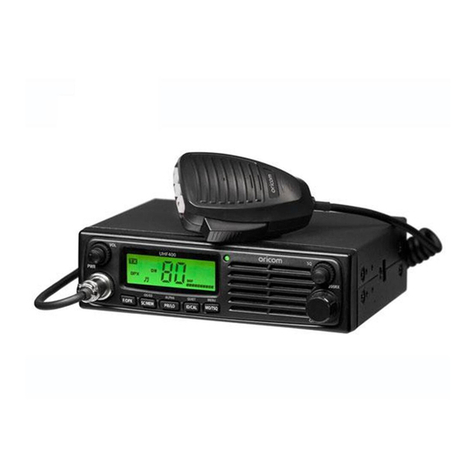
Oricom
Oricom UHF400R User manual
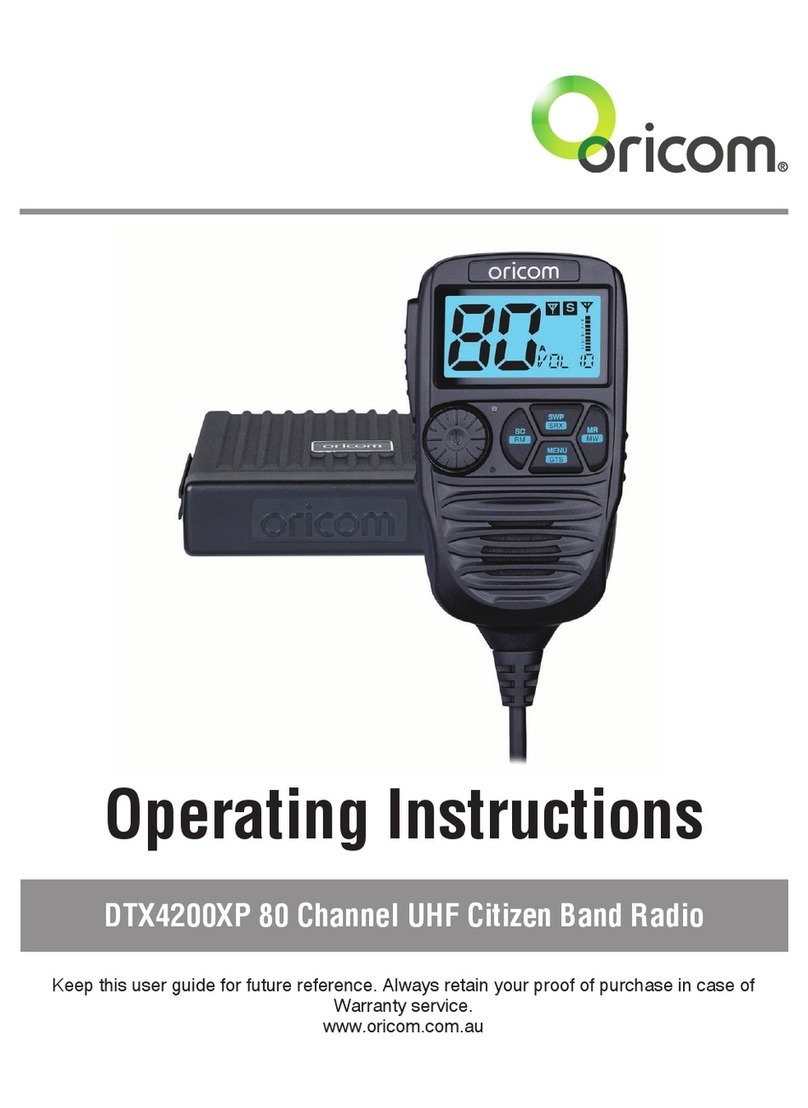
Oricom
Oricom DTX4200XP User manual

Oricom
Oricom UHF5500 User manual
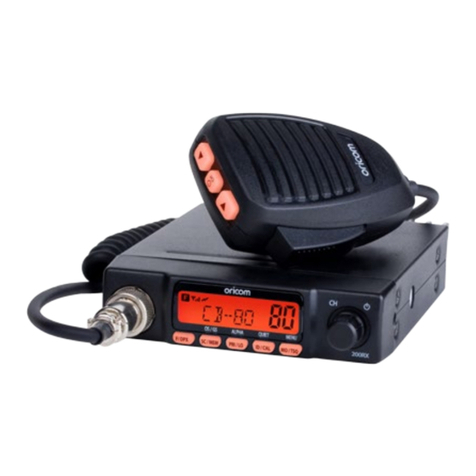
Oricom
Oricom UHF180F User manual

Oricom
Oricom DTX4200X User manual
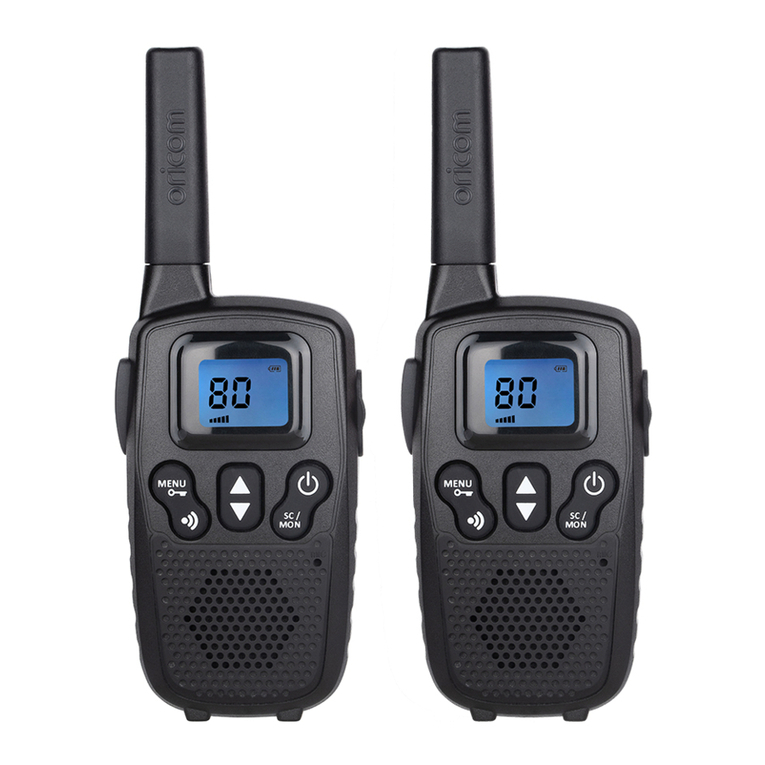
Oricom
Oricom PMR1300 User manual
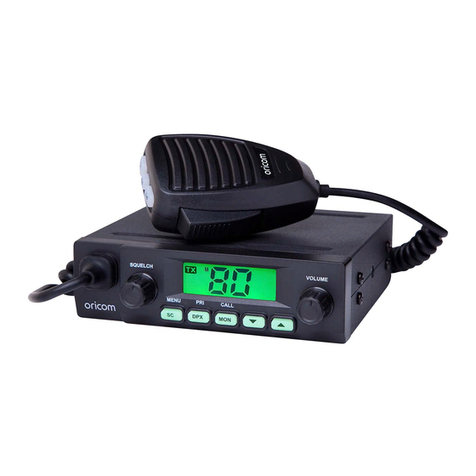
Oricom
Oricom UHF025 User manual
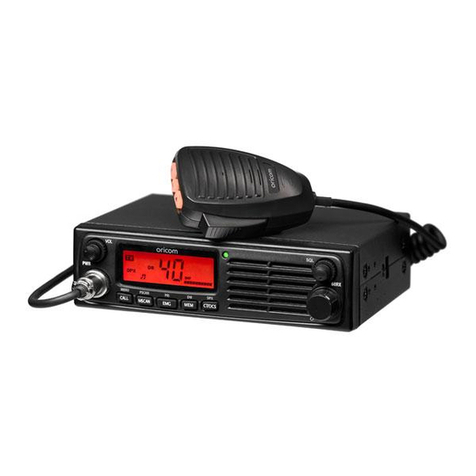
Oricom
Oricom UHF080 User manual
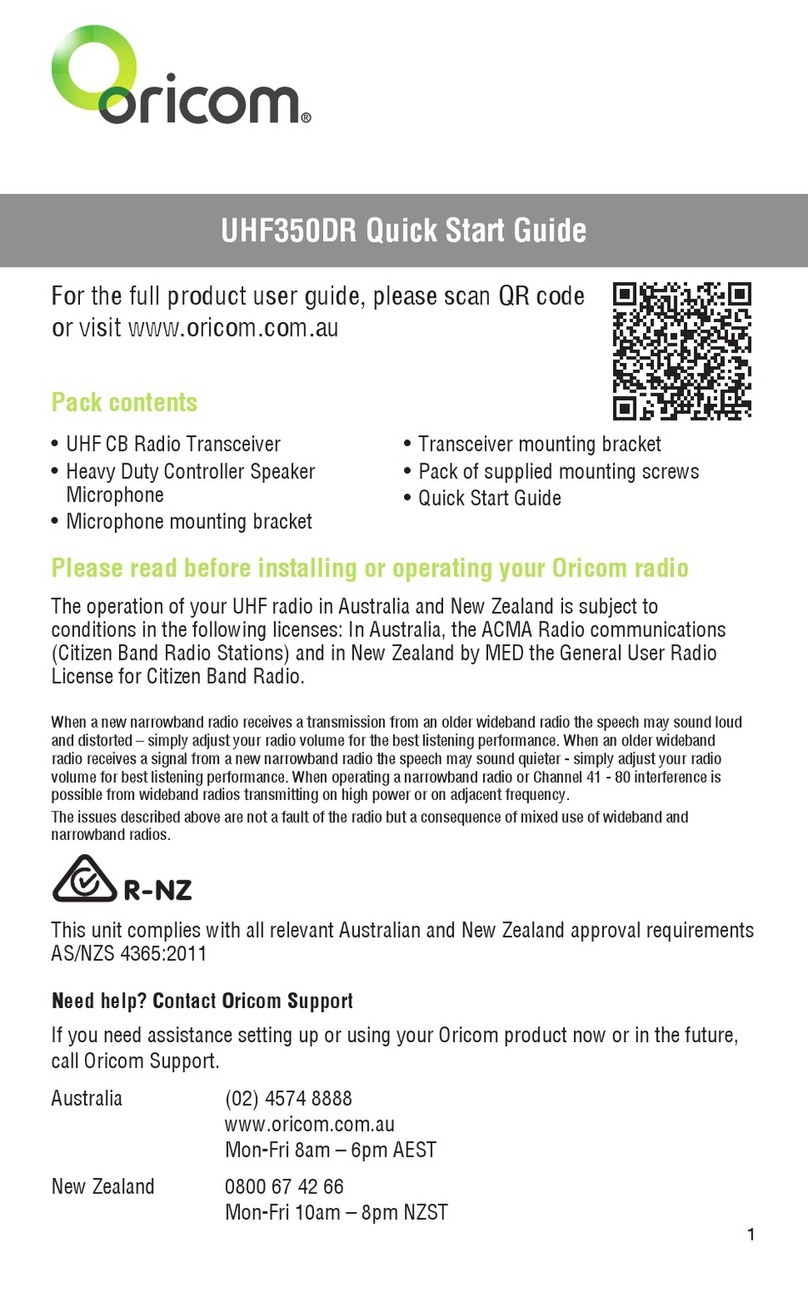
Oricom
Oricom UHF350DR User manual
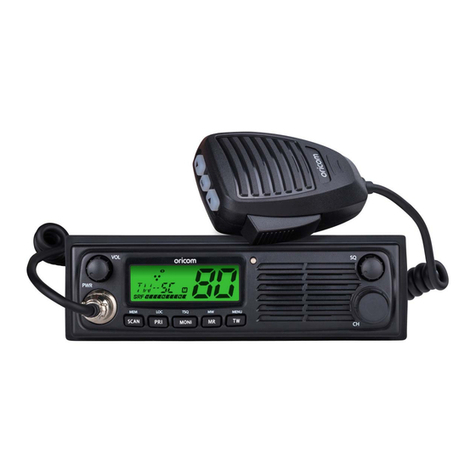
Oricom
Oricom UHF098 User manual
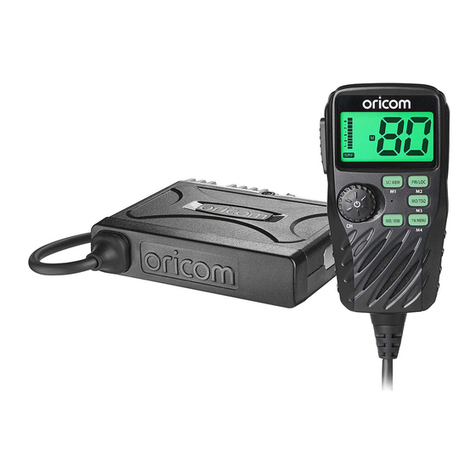
Oricom
Oricom UHF390 User manual

Oricom
Oricom UHF098 User manual
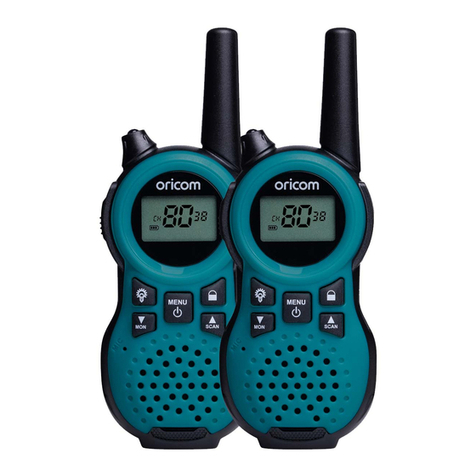
Oricom
Oricom PMR795 User manual

Oricom
Oricom UHF360 User manual
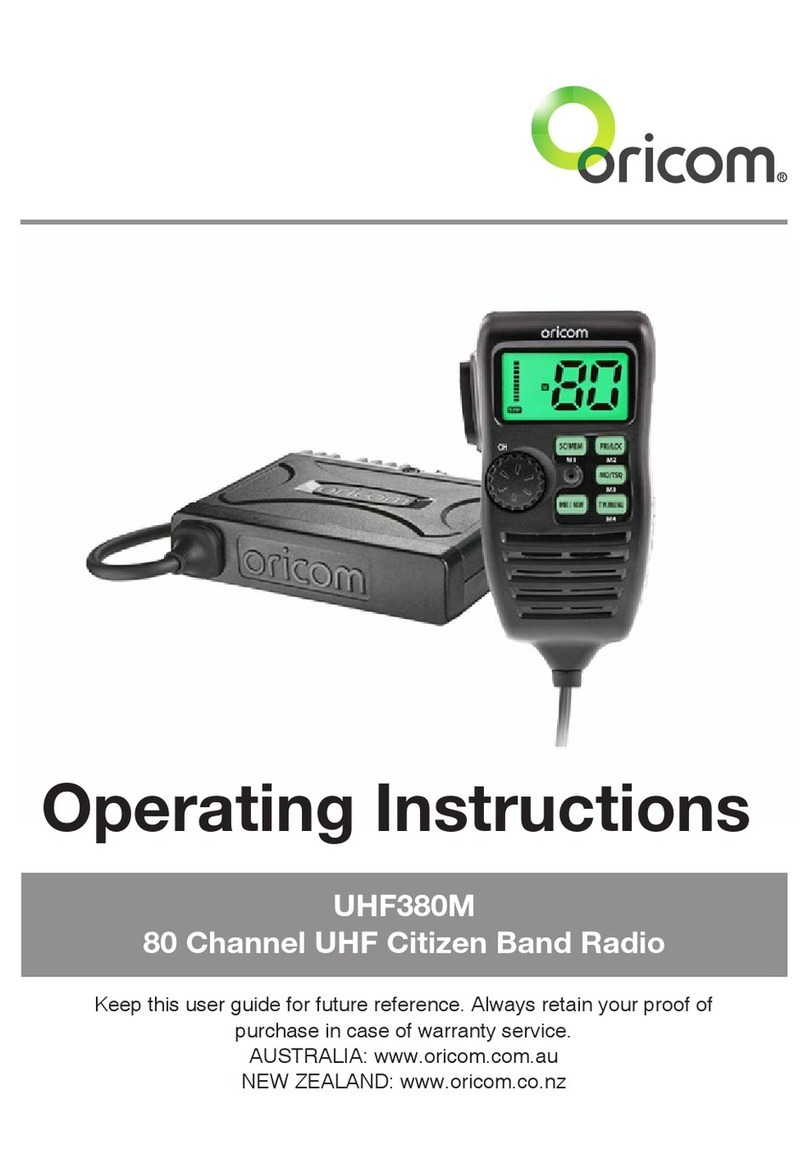
Oricom
Oricom UHF380M User manual

Oricom
Oricom UHF400R User manual
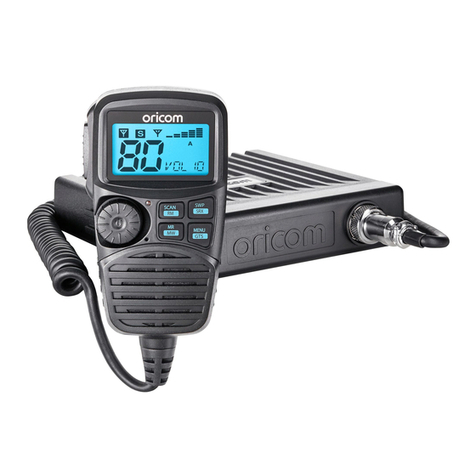
Oricom
Oricom DTX4200 User manual
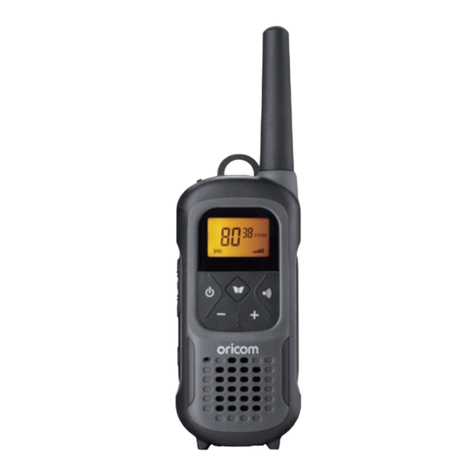
Oricom
Oricom UHF2500 User manual
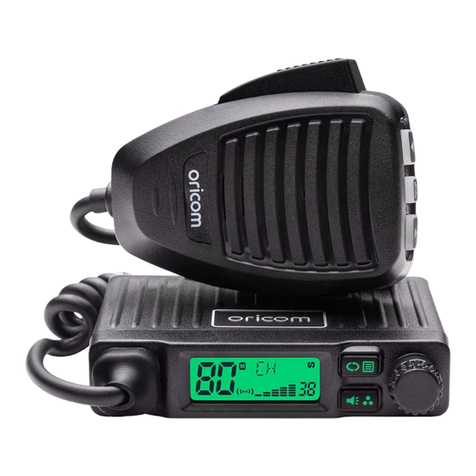
Oricom
Oricom UHF305 User manual
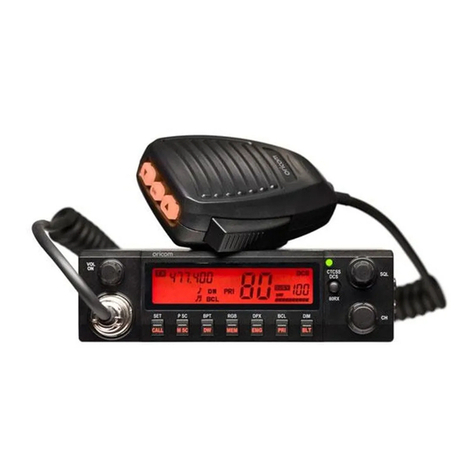
Oricom
Oricom UHF058 User manual

